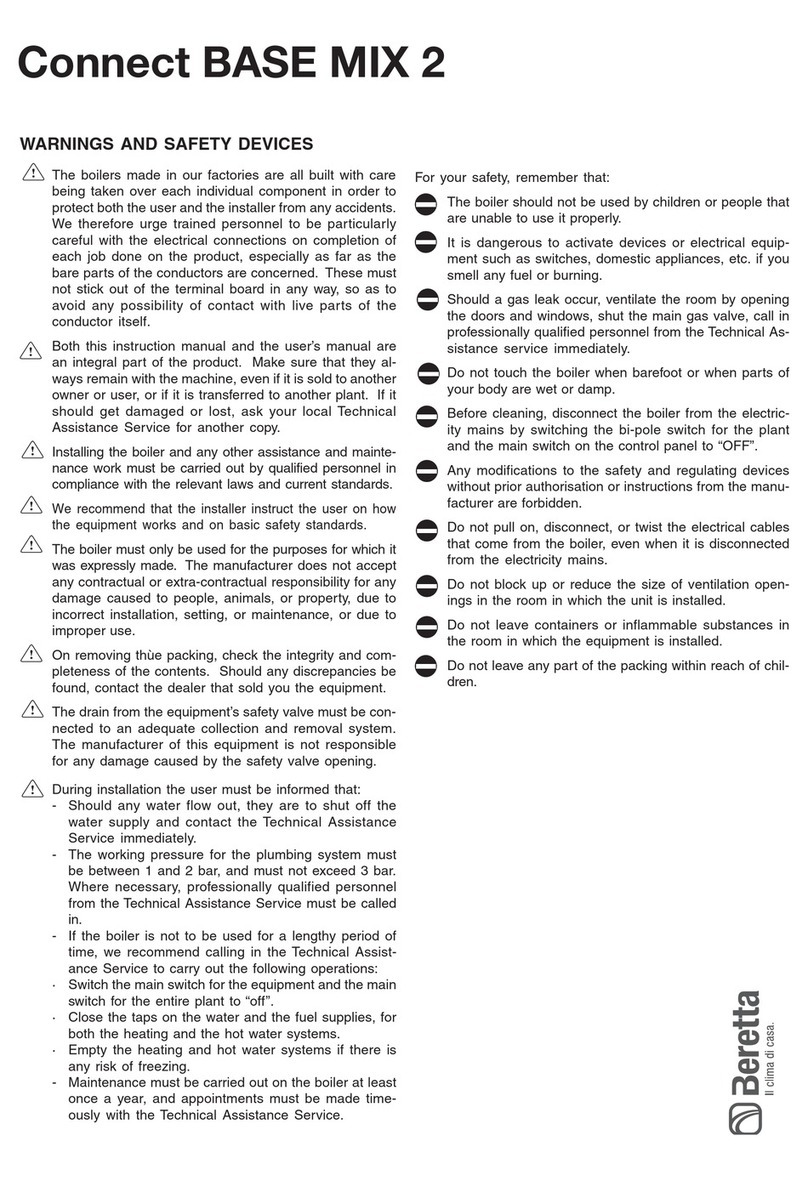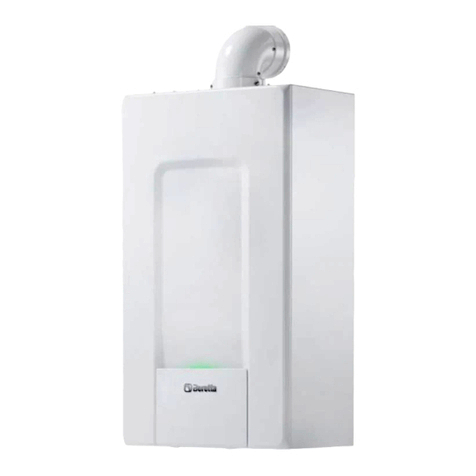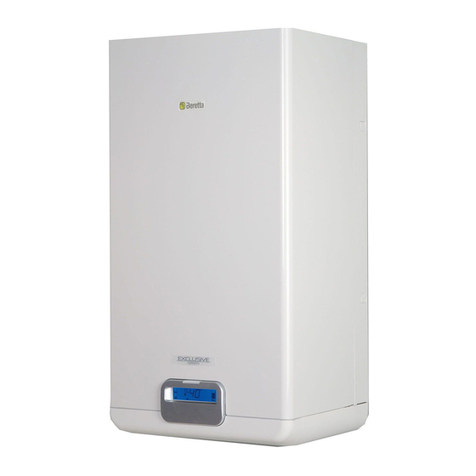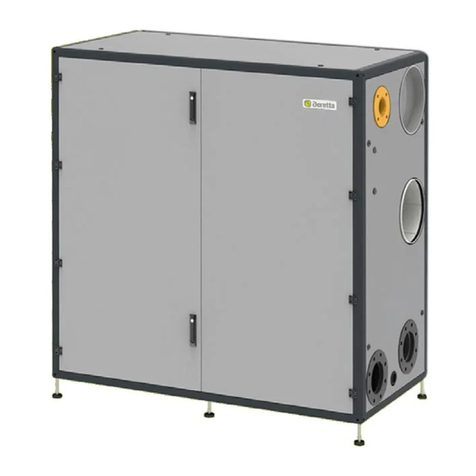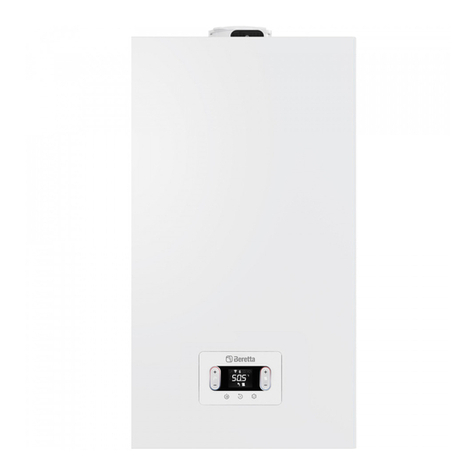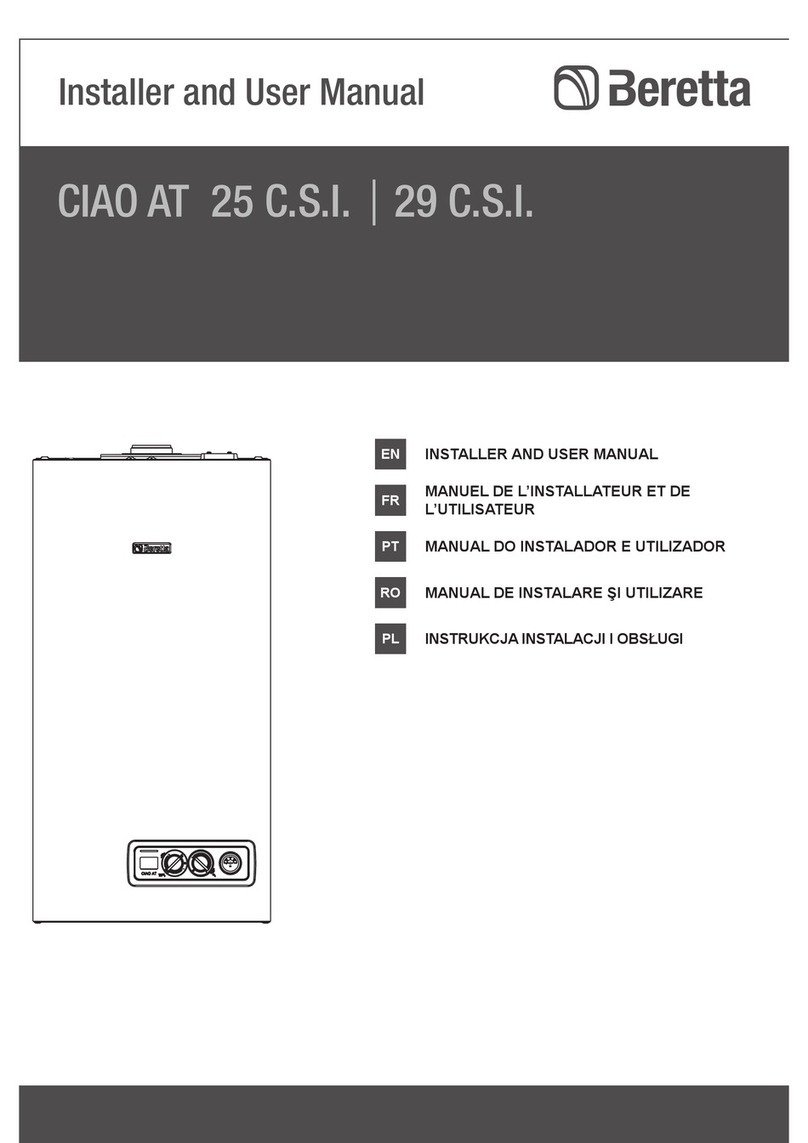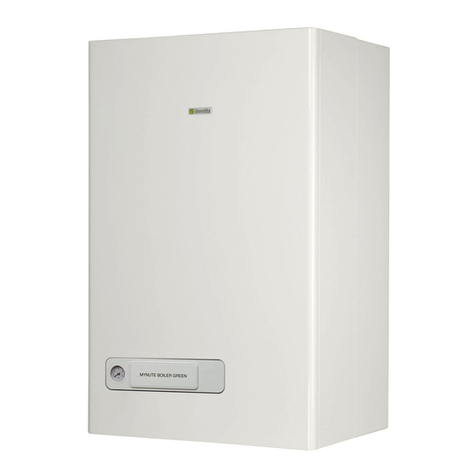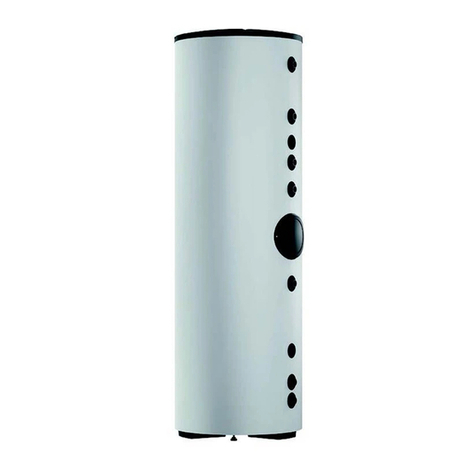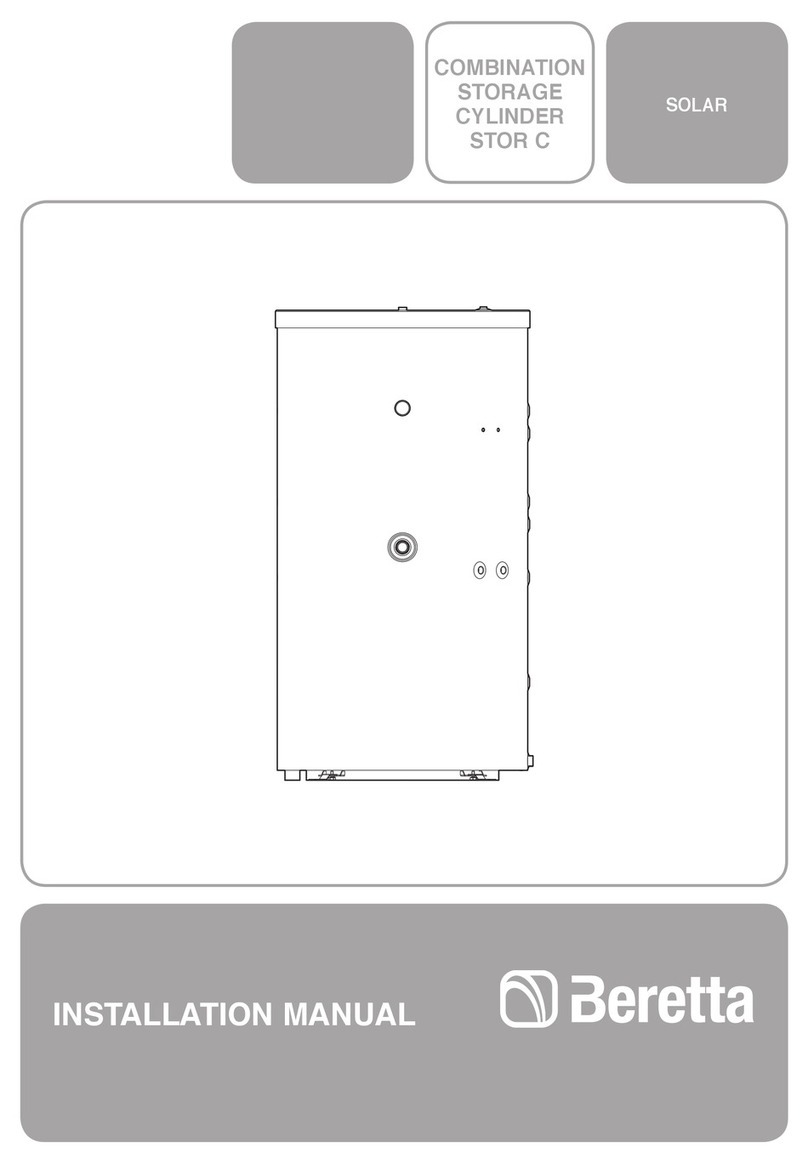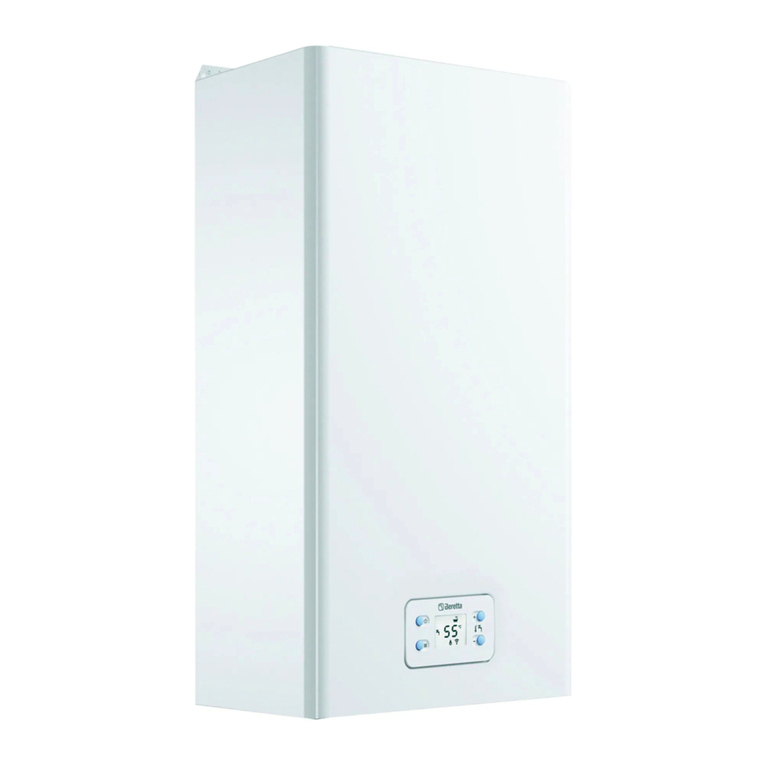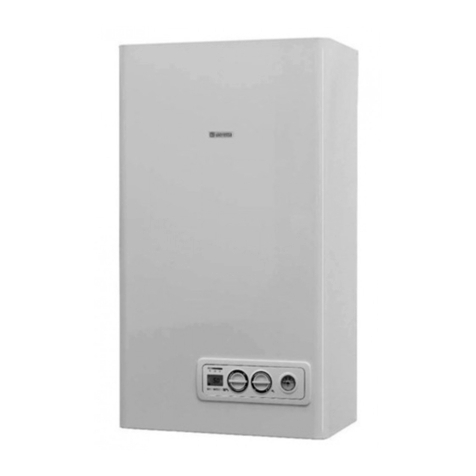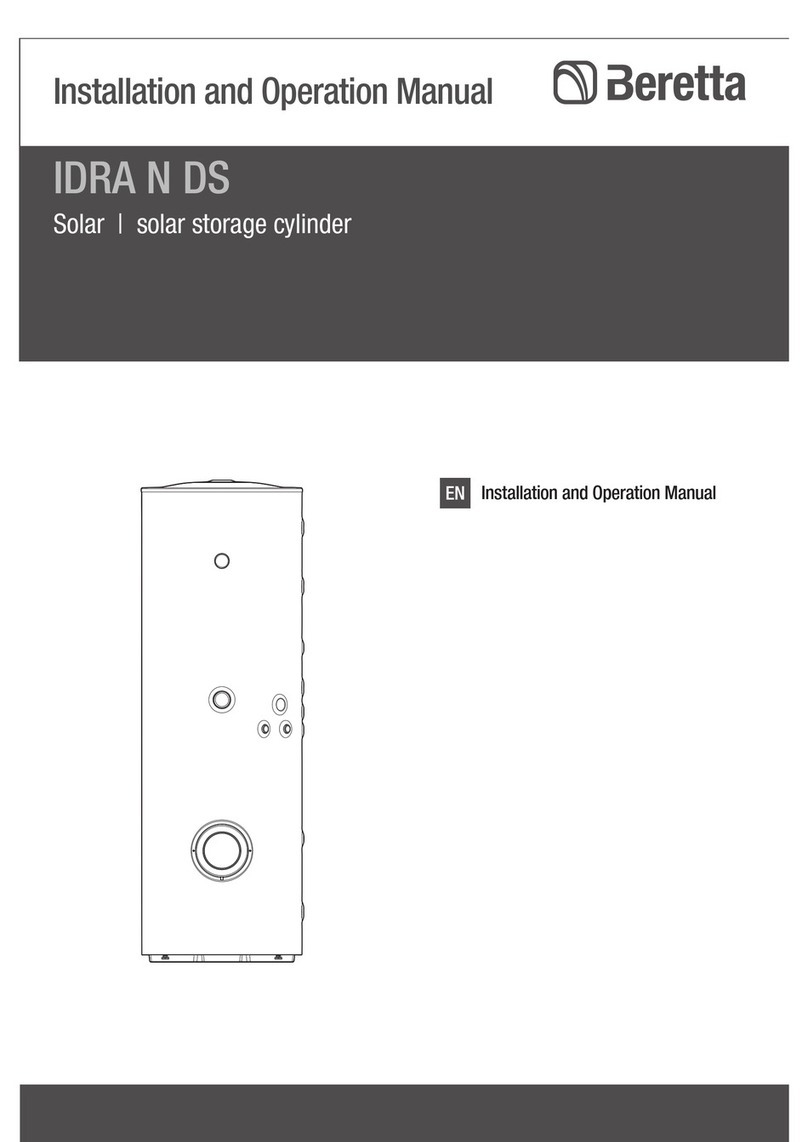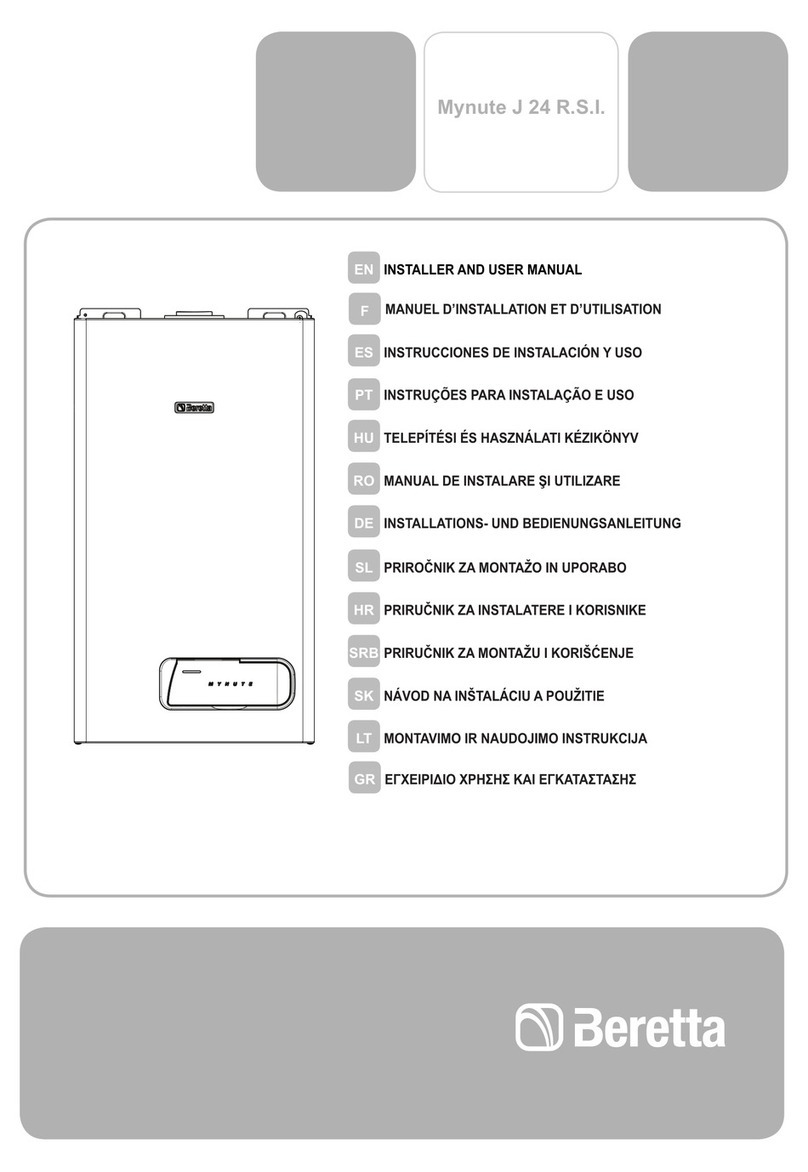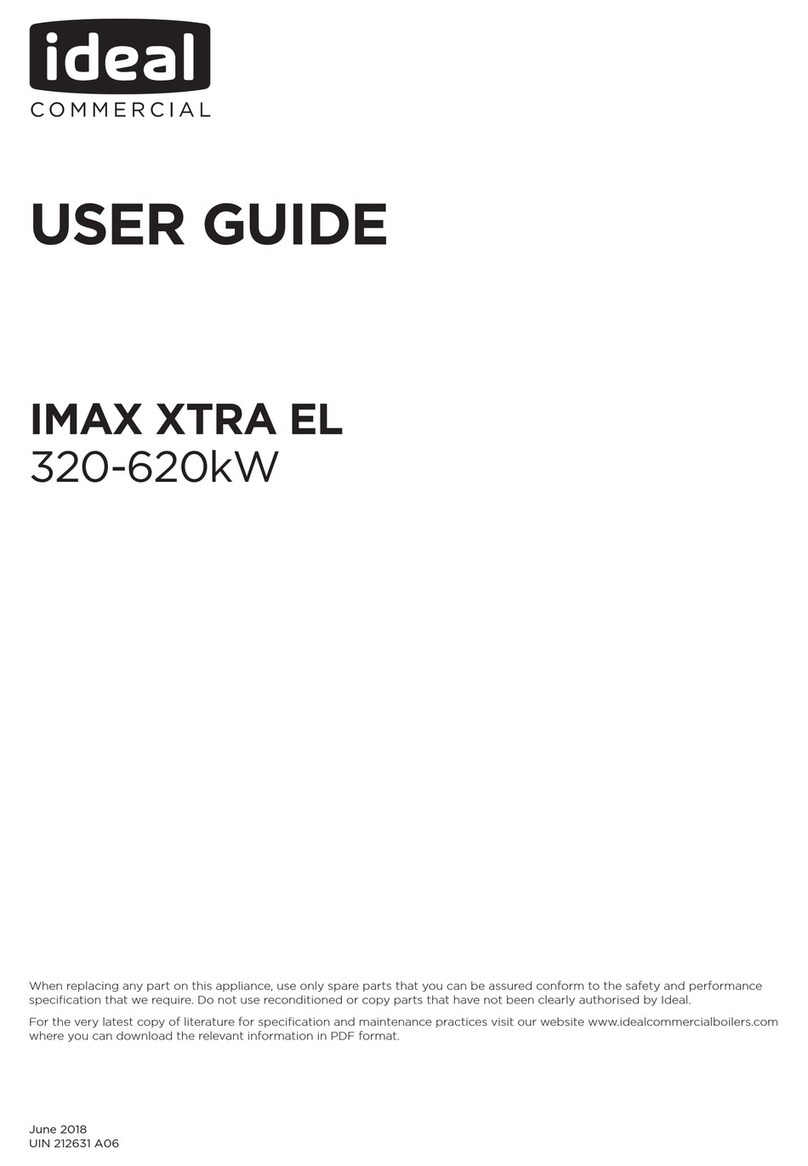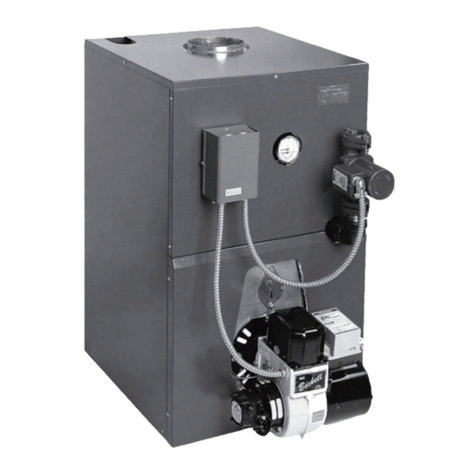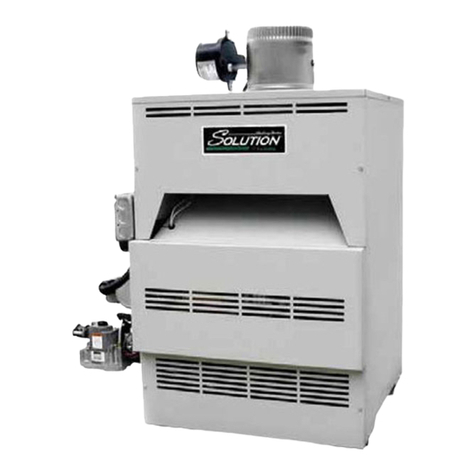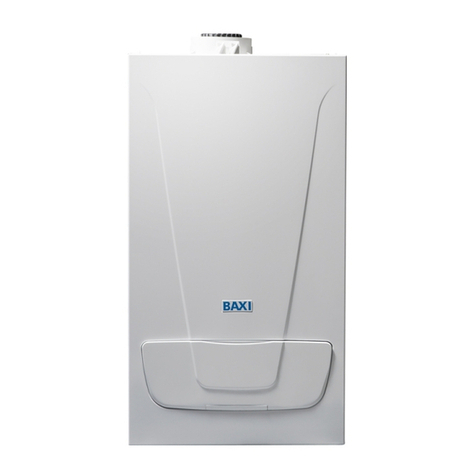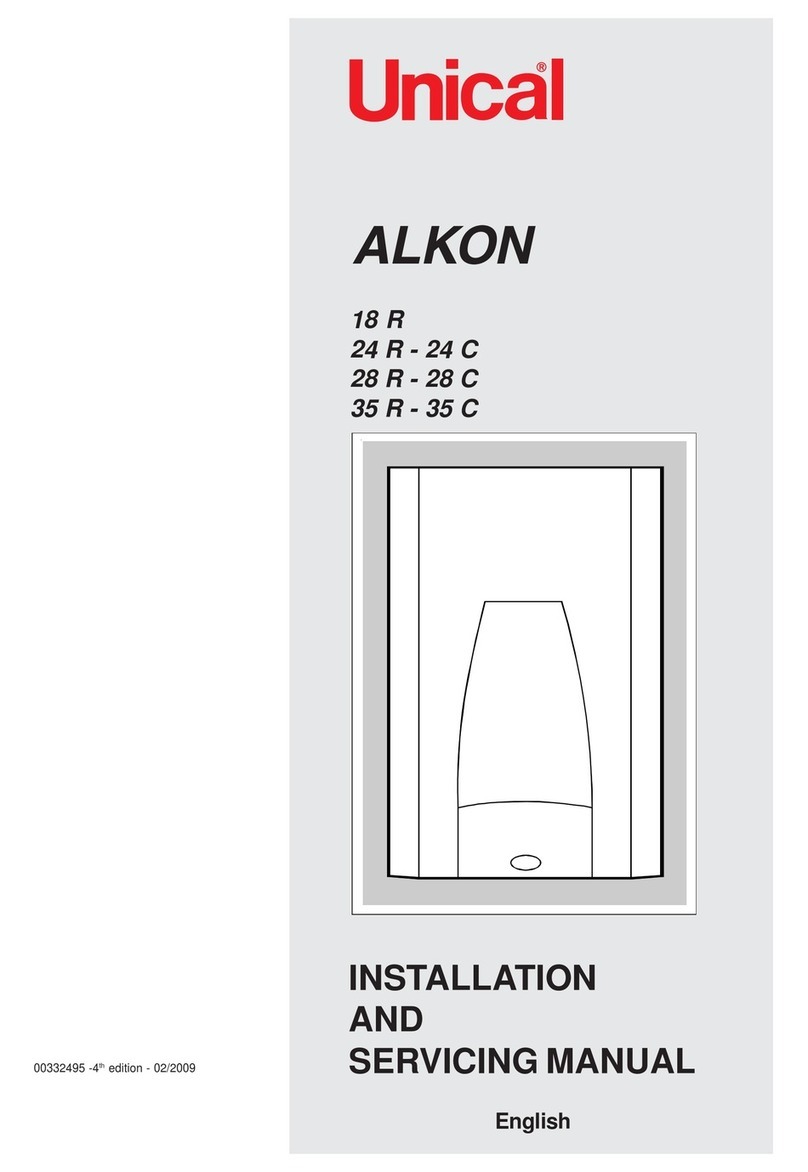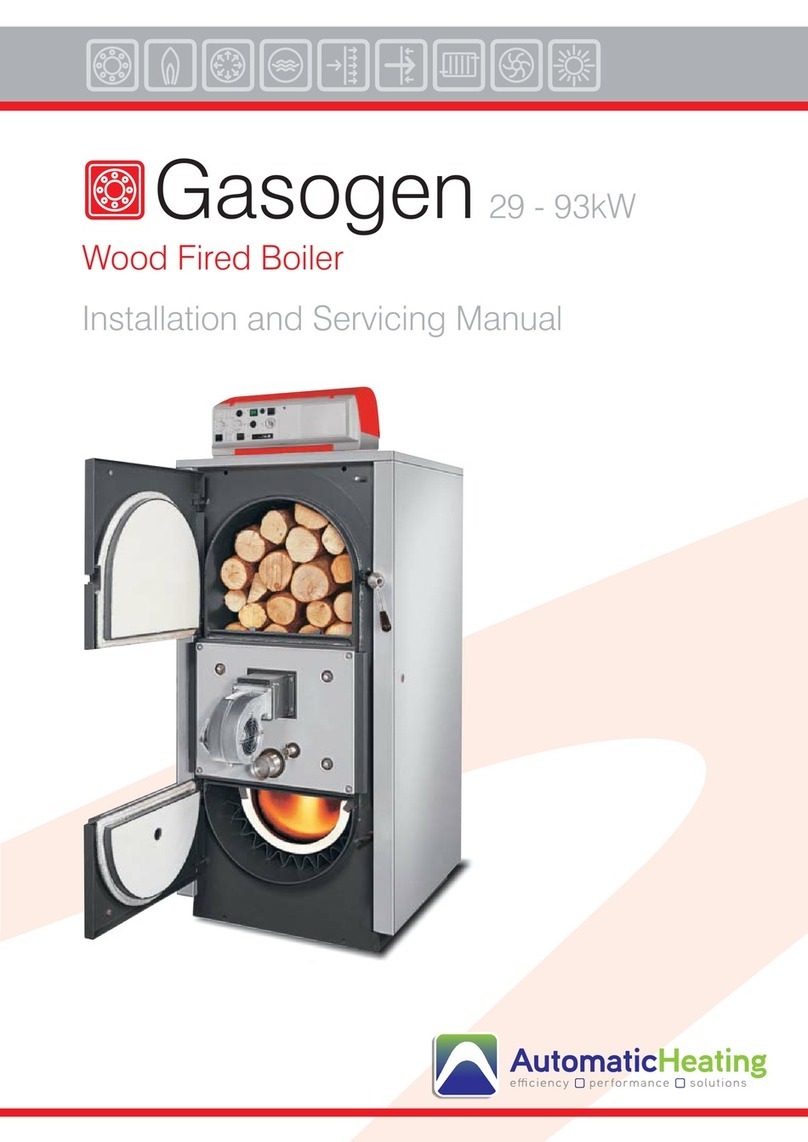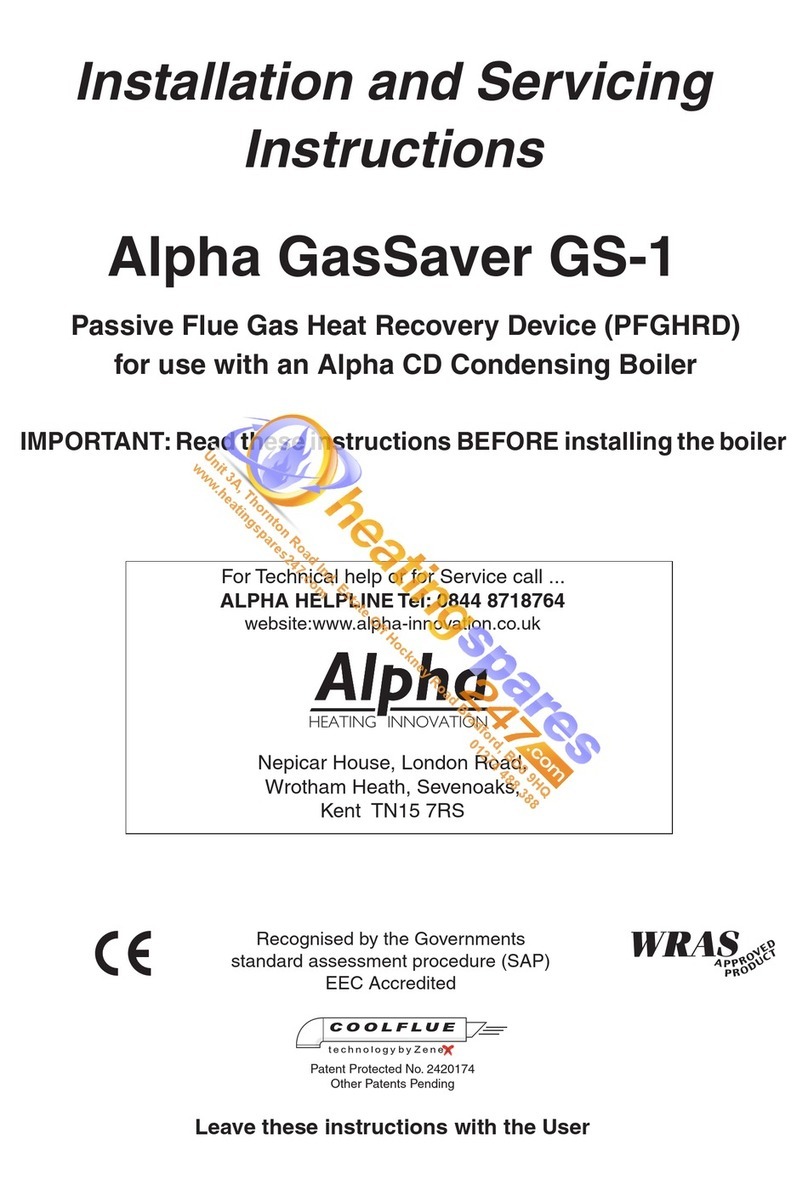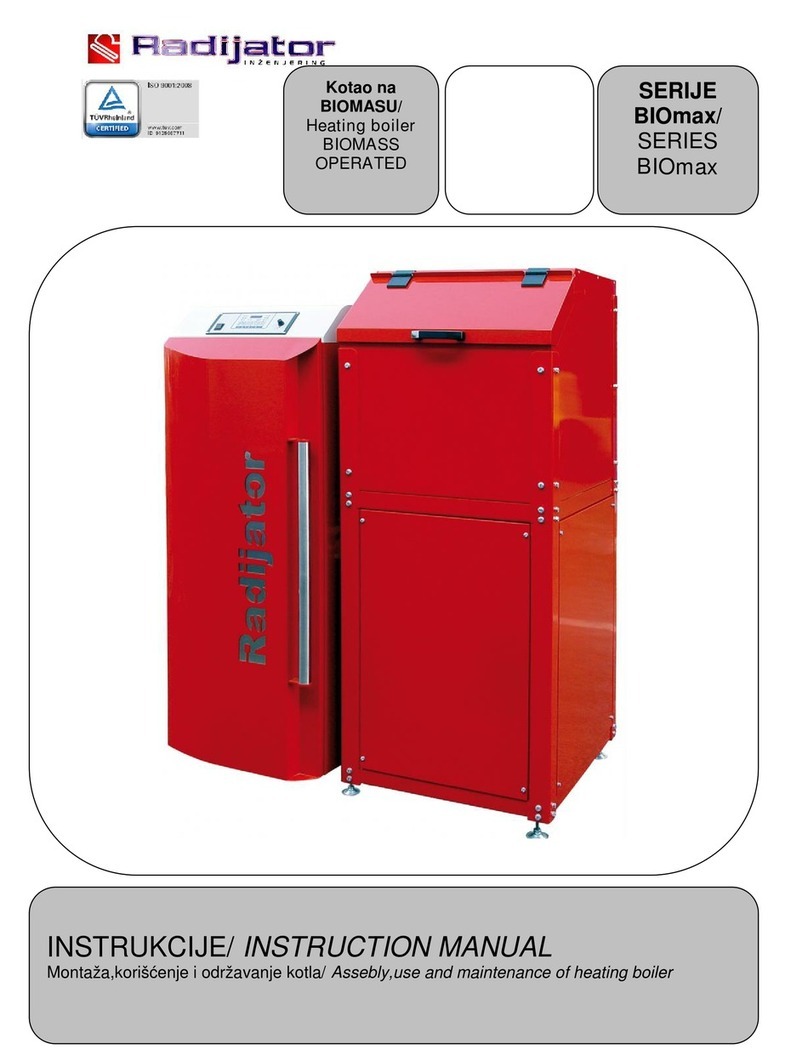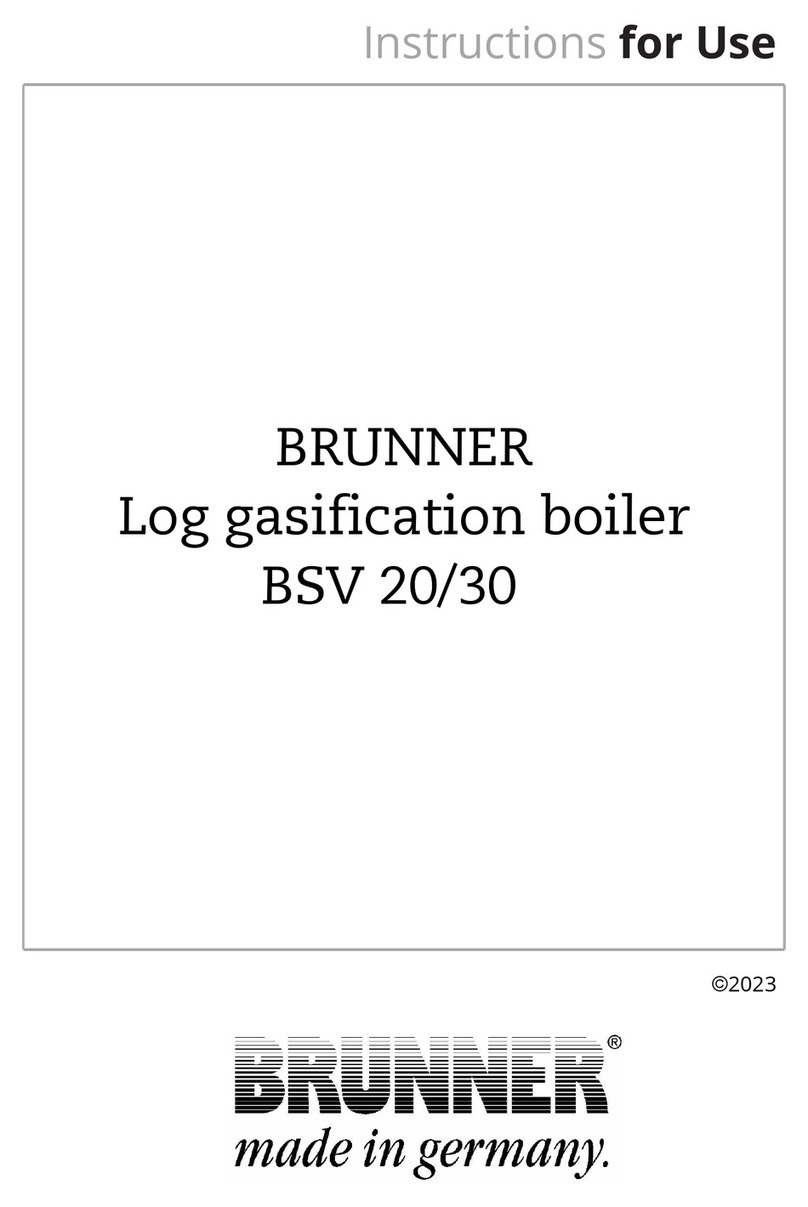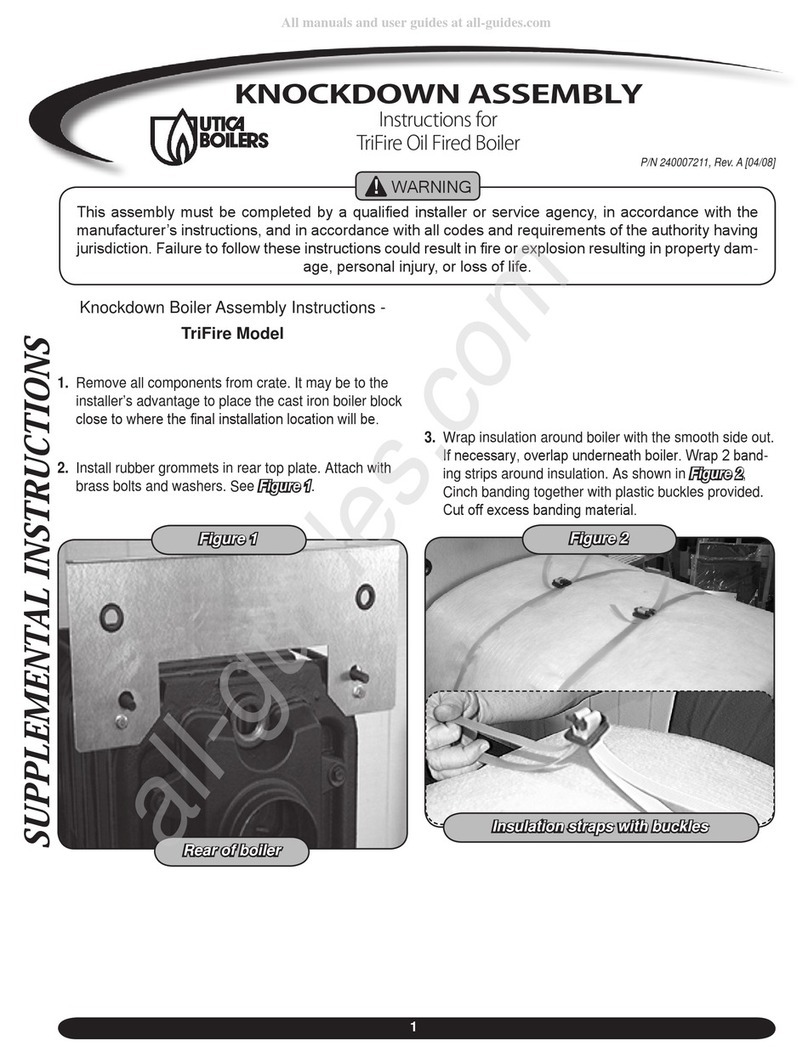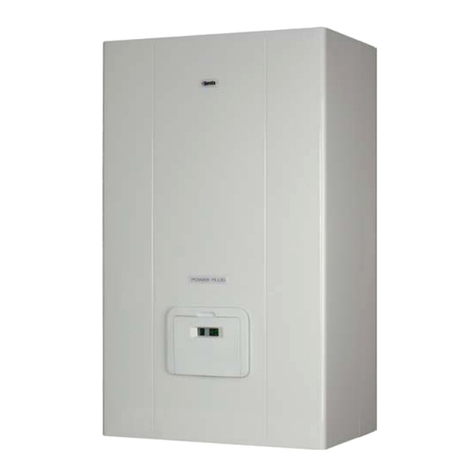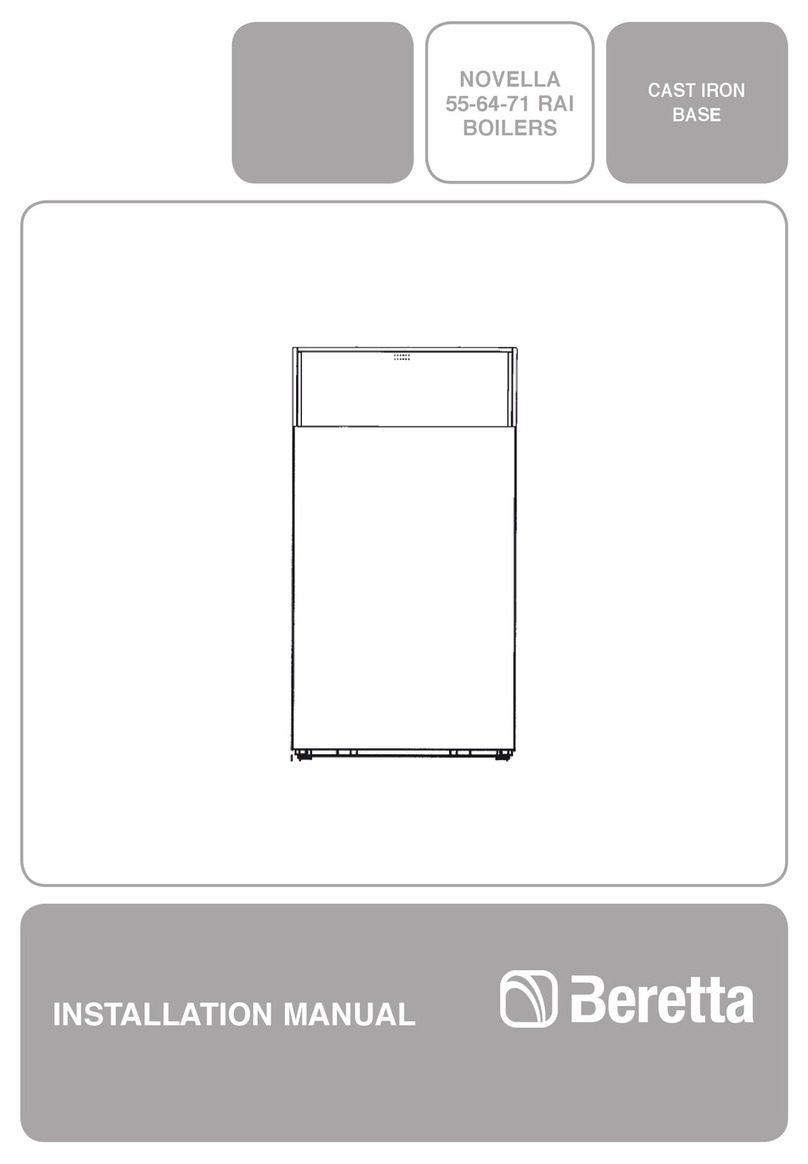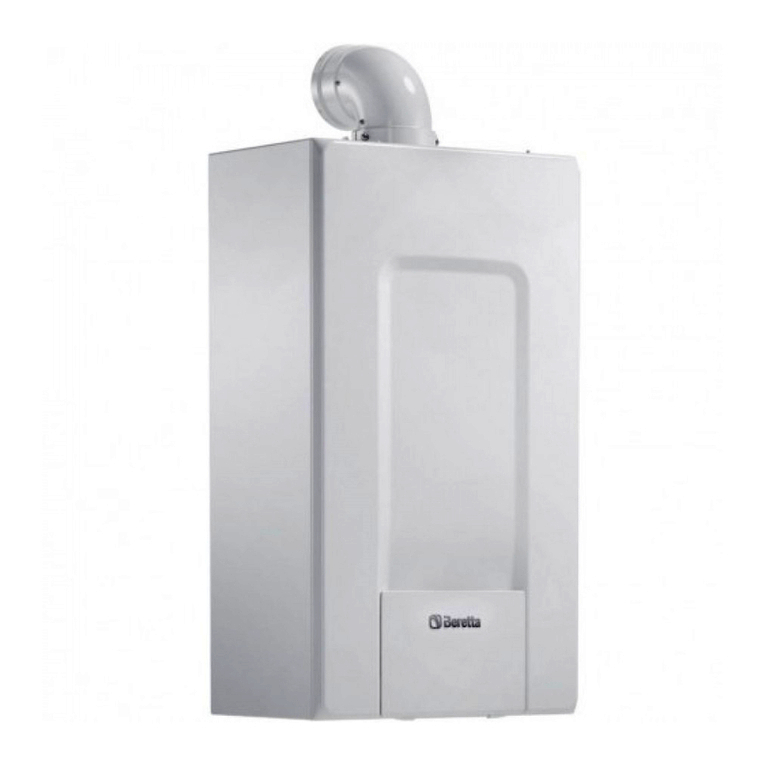
3 INSTALLATION
3.1 Installation regulations
Installation must be carried out by qualified persons, in compliance
with the following reference standards:
- UNI 7129-7131
- CEI 64-8.
- NZ building and plumbing codes with reference to NZ standards
POSITION
EXCLUSIVE - a wall-hung boiler for heating and for the production of DHW.
with f lue gas discharge pipe and pick-up of combustion air from
outside. It does not require an air intake point in the installation area.
It must be installed using concentric pipes, or other types of
discharge designed for condensing boilers with an airtight chamber.
MINIMUM CLEARANCES
( Ref fig. 6-6a Page 44)
To ensure access to the boiler for normal maintenance operations, respect
the minimum installation clearances envisaged.
For correct appliance positioning, bear in mind that:
- It must not be placed above a cooker or other cooking device
- Heat-sensitive walls (e.g. wooden walls) must be protected by use of a
cement fiber board
It is ESSENTIAL to provide the necessary space for the introduction of an
analyser for the combustion analysis check. In fig. 6a P44 a
sample drawing where distances between boiler and cabinet/niche
were obtained using a 300mm length analyser probe.
3.2 Removing the casing
To access the components inside, remove the casing as indicated below:
-
Locate and unscrew the 2 screws (
A
- f
ig.
13) that f
ix
the front
casing.
-
By leveraging the fixing clips (
C
- fig. 13), unhook the lower part of
the
casing now
lift the casing upwards to release it from the top tabs
(
B
- fig. 13 P44), then
remove the face panel.
The noise absorbing panels inside the front and side walls ensure
the airtight seal for the air supply duct in the installation
environment. It is therefore ESSENTIAL after dismantling
operations to correctly reposition the components so as not to
compromise the boiler’s operation.
WARNING If damaged the front panel must be replaced.
Under the safety valve, install a tundish with the corresponding
discharge in the event of leaks due to the overpressure of the heating
system. The domestic cold input must not exceed 6 Bar
Prior to ignition, make sure that the boiler is designed to operate
with the gas available; this can be checked by the wording on the
packaging and by the adhesive label indicating the gas type.
It is important to highlight that in some cases the flue is under
pressure, so the joints of the various elements must be airtight.
3.3 Positioning and hydraulic
connections
The boiler comes as standard with a boiler hanger jig. The position and
dimensions of hydraulic fittings are shown in Fig 8/9 on page 44
, proceed as follows:
- Fasten the boiler Bkt (F) to the wall and use a spirit level to make sure it
is perfectly horizontal
- Use the jig to identify the required pipe centers
-
The pipe template and hanger can then be removed
form the jig .
Install pipework
Using the valve kit supplied . include a magnetic filter (not supplied) in the
return line . A magnetic filter is a requirement of warranty
Note The 1st 1m (minimum) of pipe used for the flow and return line
should be run in copper.
The condensate and relief drain outlet must be run avoiding
double trapping
The system attached must include a low point drain for
flushing the system
3.4 Gas connection
Connection of the gas supply must be carried out in
compliance with current NZ installation standards. By a
certifying Gas fitter
Ensure the supply pipework supports the delivery of the relevant
Gas being used and is correctly sized.
If the appliance is to use LPG attach the Gas type label supplied
3.5 Electrical connections
(
Figure 10/11 Page 45)
Low voltage connections
Carry out the low voltage connections as follows:
- Use the external cable box supplied as standard
- Unscrew the fixing screws of the cover (V)
- Carry out the connections as shown in fig. 11
It is recommended to use wires with section not exceeding
0,5mm2.In case of TA or TBT connection, remove the respective
shunts
(fig. 12).
- Close the box with the screws that were previously removed
- Press the two tabs on the sides of the box to place it correctly in its
housing in the boiler sliding upward within the guide rails and tighten the
safety screw (V1)
If the low voltage electrical connection box is not connected the boiler
will not ignite.
High voltage connections
The connection to the mains supply must be made via a standard power
point. The appliance works with alternating current at 230 Volt/50 Hz, and
is in compliance with Standard EN 60335-1. (NZ Compliant)
It is obligatory to make the connection with a safe ground/earth,
The manufacturer will not be liable for any damage resulting incorrect or
absent earth connection.
.
3.6 Flue gas exhaust and combustion air suction
To evacuate combustion products, refer to UNI 7129-7131. Always comply
with local standards of the Fire Department, and with possible local
municipal dispositions.
The release of combustion products is assured by a centrifugal fan. The
control board constantly checks that it is operating correctly. It is essential
for evacuating fumes and induction of boiler combustion air that only
original flue pipes are used and that the connection is made correctly as
shown in the instructions provided with the flue gas accessories.
A single flue can be connected to several appliances provided that every
appliance is the condensing type.
The boiler is a C-type appliance (with airtight chamber), and must therefore
have a safe connection to the flue gas discharge pipe and to the
combustion air suction pipe; these carry their contents too and from
outside, and are essential for the operation of the appliance.
Both concentric and twin terminals are available.
3.7 Filling the heating system (fig. 16)
Note:
Even though the boiler is fitted with a semi-automatic filling
device, the first filling operation must be carried out by using the filler tap
(
B
) with the boiler in the off position.
Filling
. must be carried out when the system is cold, as follows.
- Open the caps of the lower (A) automatic air vent valve by two or
Three turns; to allow a continuous venting of the air, leave valve
A open.
- Open the filling tap (B) until the pressure indicated by the water pressure
gauge is between 1 and 1.5 bar
-
Re-close the filling tap.
On going venting of the boiler takes place automatically via the two
automatic vent valves positioned on the circulator & top point
3.8 Flush and Protect
In the case of a new installation or replacement of the boiler, it is necessary
to pre flush the heating system
To ensure the device operates well and is protected from scale and
corrosion add inhibitors, antifreeze etc as required and check the
parameters in the table are within the values indicated.
Failures as result of not flushing the system will not be covered.
